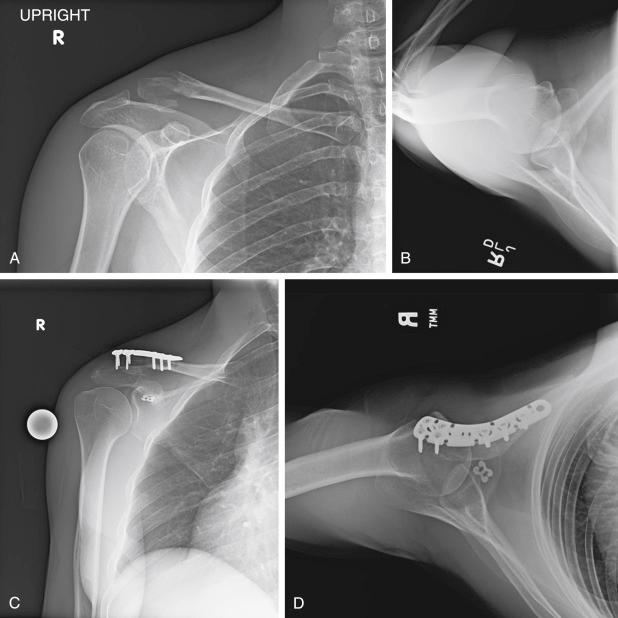Physical Address
304 North Cardinal St.
Dorchester Center, MA 02124
Distal fractures of the clavicle (DCFs) are defined as fractures of the lateral third of the clavicle and are classified by their relationship to the acromioclavicular (AC) and coracoclavicular (CC) ligaments.
DCFs account for approximately 15% to 35% of all clavicle fractures.
High-energy trauma and a direct fall onto the shoulder are among the most common causes of DCFs.
In general, concomitant lesions are rare; however, injuries to the head, cervical spine, neurovascular structures, and the thorax must be excluded.
Although stable fractures can be managed nonoperatively, unstable fractures normally require surgery.
Operative treatment options include plate fixation with or without arthroscopically assisted CC fixation.
The most common and useful DCF classification for guidance of management and prognosis was proposed by and expanded by , who classified DCFs into five types. Type 1 is lateral to the CC ligaments, minimally displaced, and usually stable. Type 2 is medial to the CC ligaments, displaced, and unstable owing to the tension of the trapezius muscle. It can also be further sub-classified on the basis of injury to the CC ligaments; type 2A demonstrates intact CC ligaments, and type 2B is defined by a ruptured conoid ligament. Type 3 is intraarticular and stable with the CC ligaments intact. Type 4 is a periosteal sleeve avulsion with intact CC ligaments; it occurs in children and is stable. Type 5 is comminuted and unstable.
The inspection of the affected shoulder often shows a superior migration of the medial fragment, especially in unstable fractures. At the same time, palpation of the clavicle is painful and the patient often presents with the arm fixed in a relieving posture. The differential diagnosis includes an AC joint separation and is clinically difficult to distinguish from a distal clavicle fracture. Therefore a complete radiographic evaluation, including standard clavicle radiographs in two planes and an axillary lateral view ( Fig. 15.1 ) of the affected shoulder, should be performed as first-line diagnostics when a lateral clavicle fracture is suspected. Magnetic resonance imaging (MRI) and computed tomography (CT) should be used only for suspicion of concomitant lesions and are not appropriate for a primary diagnosis.

If the fracture is nondisplaced or minimally displaced, extraarticular, and stable, nonoperative management is usually the preferred treatment. In general, type 1, 3, and 4 fractures may be managed nonoperatively ( ). Broadly accepted indications for operative management of clavicular fractures include open fracture, skin tenting that may lead to open fracture, and neurovascular compromise ( ). Additionally, unstable fractures (types 2 and 5) have a high risk for malunion and non-union and therefore should be treated surgically. Whenever there is evidence of CC ligament disruption (such as a superiorly displaced medial fragment), repair or reconstruction of the CC ligaments or CC fixation with cortical buttons and sutures should be performed to avoid a secondary dislocation of the clavicle.
Become a Clinical Tree membership for Full access and enjoy Unlimited articles
If you are a member. Log in here